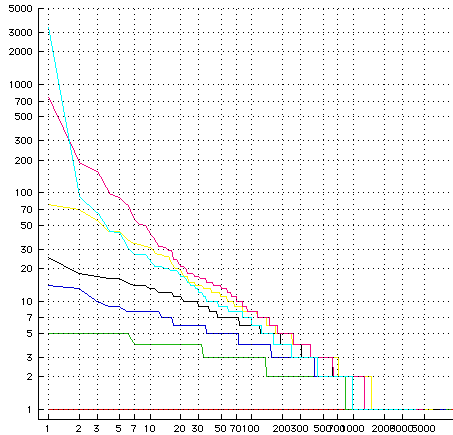Many years ago my father advised me to avoid antenna design – “Too much black magic.” I took that advice; but I seem to have fallen into a similar trap, i.e. pricing.
Consider this pricing problem. You sell a product which two classes of people. One class, 10 people, would be willing to pay 100$ a unit. A second class with 90 people in it are willing to pay 10$ a unit. So if the vendor charges 100$ he will make $1,000; if he charges 10$ then he will also make a $1,000. If the the first class is willing pay a bit more or the second class is willing play a bit less then the vendor will profit if he makes only 10 units.
That story is a bit bloodless so let’s put some adjectives on these classes. The first class is desperate if they are willing to pay so much. We might say the first class is very loyal to the vendor’s product and nothing else will do. We might say the first class is locked in.
Early in the Bush administration a handful of electricity vendors in California realized they were in exactly this situation. They could make money if they sold less electricity. So they shut down some generating plants. They called it maintenance and complained about excess regulation. The first class of buyers, unable to switch, locked in, and addicted to electricity then drove up the price to amazing heights. At the time experts knew exactly what what was going on but the regulatory organization had been entirely cooped by the industry and so nothing was done. Amusingly the Bush folks talked about how we needed more supply which was true, and suggested we should open up new oil fields which was irrelevant.
There is a picture in my local paper of a long line in front of a pharmacy down the street from me. Long lines are a symptom of a group of folks in the first. They were queued up to get flu shots. The supply of flu shots has fallen sharply. The price is up. Clearly this market is just like the one in the model above. There is a core of desperate buyers willing to pay a lot; as demonstrated by their willingness to wait in extremely long lines. I’m suspicious that it’s also an example of the kind of story shown above.
What’s fascinating about some of these scenarios is how the trigger of the mode switch could come from anywhere. For example an investor in firm A might strive to get firm B shutdown; say by reporting safety violations to a regulator. Then when the firm B gets shutdown and the large class of low price buyers go looking for an explanation the regulator gets blamed.
The California electricity debacle shown how deeply the pro-business Republicans have undermined the regulatory systems in this country and sadly it makes me terribly suspicious about the current flu vaccine situation.
Meanwhile the Bush administration thinks scientific fact is a special interest group, and certainly not part of their base.
